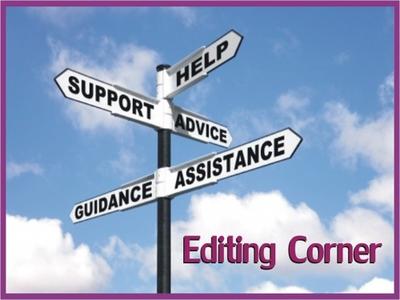By Sam Thorne, Storytime Editor-in-Chief
In everyone’s life, there is that special someone who makes you want to wring them warmly by the neck. In a good way, of course.
Of course, you can’t really throttle this person, drown them or have them forcefully emigrated. The legal system tends to frown on these things. That minor detail aside, you might be related to this person, or ‘owe them’ in some way. You might work for them. Or perhaps you’re under contract to share living space with them for the next six months. You can’t do much but survive these people, but you can put them to good use.
Your key characters (both protagonist and antagonist) need adversaries. I don’t mean villains; they’re in a class of their own. By adversaries, I mean secondary or minor characters who exist to:
- frustrate your main characters’ (MCs) aims
- show what’s important to your MCs by creating inner conflict
For example, our heroine—let’s call her Clare—has an anxiety about being late because she works in the dispatch office for the emergency services. To avoid the cliché of Clare having a jerk boss who will rip two strips off her if she’s late, let’s step sideways. We can create tension adding someone to Clare’s life who has this strange talent for making her late. I’m going to be mean, and give Clare a housemate called Lisa, who is a professional problem-haver:
Clare checked her texts for traffic updates and found one from Mark, sent just a couple of minutes ago.
Geoff’s off sick. Any chance you can get in early for hand-over?
She flicked a glance at the time—07:15—and bit her lip. So long as she got out now, and the A316 was clear, she’d have a few minutes alone with him before shift started. To hand over, of course. She thumbed back On my way and shoved her mobile into her back pocket.
Clare didn’t hear any movement from Lisa’s bedroom, but picked her way towards the front door nonetheless, treading only on the non-creaking floorboards. She passed the hall table, sliding her keys into her palm. She had her hand on the latch when she heard a sniff. Her heart fell.
Don’t look round.
‘Clare?’ Lisa’s voice had that tell-tale waver. ‘Have you got a minute?’
Damn it!
‘It’s just…I heard from Joe last night. He’s not doing well.’
Clare longed to be able to say ‘sorry to hear that’ and make a run for it, but Joe had been ill. And if it were her brother going in and out of hospital, she’d need a bit of support.
Suppressing the sigh, she turned and gave Lisa a hug.
This kind of sequence serves several purposes. Firstly, to show Clare letting her empathy get the better of her. To begin with, she’s a bit of a people pleaser. By the end of the story, she may find that she knows the difference between distress and emotional blackmail (in any context), and have a better handle on how to deal with it. Adversaries are good ‘showing’ tools. And they can be cathartic, too. Mix up the details of your irritating character enough, and you create a whole new person.
There are all kinds of adversaries. Your MC’s best friend could turn out to be an adversary, thanks to her pushy (but well-meant) lectures about following the head, not the heart. A brother could be over-protective. Perhaps there’s a colleague who’s unreasonably cheerful every morning, making the MC feel (and appear) irritable by comparison. Or maybe there’s a Dom who is only masterful in the bedroom, and hopeless everywhere else.
The extent and depth of the role these people have really depends upon the length of your story. But if there’s something getting in the way of your character getting what they want, perhaps let that ‘something’ be a person. There’s more opposition, that way.
So, how do you create these adversarial characters (ACs) without fear of being accused of writing someone specific into your story? Well, there are a few methods:
1) Next time you’re up at two in the morning, replaying an argument in your head and gnashing your teeth, get up and write down some of the things you wish you’d said. If nothing else, it might help you sleep better. Anger-induced insomnia is usually a sign of repressed resentment. Tap into that resentment more closely and you’ll find a golden stockpile of material for internal conflict.
2) Make a list of love-to-hate characters in movies and TV. What makes them so infuriating? Can you transplant that behaviour/trait to a different context?
3) Read books on coping with idiots at the office. They feature long lists of aggravating behaviours which you can apply to just about any situation. Some good guides are:
Dealing with Difficult People (Drs Rick Brinkman & Rick Kirschner)
The Way of the Rat: A Survival Guide to Office Politics (by Joep P.M. Schrijvers)
4) Finally, watch and listen to stand-up comedians. They usually have some kind of routine that kicks off with some variation of: ‘I can’t stand it when…’ If they make you laugh, jot their point down. If you can identify with it, so will many, many others.
But we don’t want to read about two-dimensional ‘impossible’ people. You can dial them back a little by making them supportive of your MC at unexpected moments, or by giving them frustrations that most people can sympathise with. For example, a cliché AC might embark on a political/totally selfish rant; your AC might get unduly enraged about continually finding tiny cars hidden behind huge ones when trying to find a space in the car park.
Now, take a deep breath, summon your imagination, and write a character who’s going to irritate the living daylights out of your readers. In a good way, of course.




Wow! What a terrifically useful article for a new writer like me. Thanks, Sam! I appreciate it–
CeCe Marsh
You're welcome 🙂 thanks so much for commenting. I'm contemplating my next article on how to fit family around sex lives in erotic novels 🙂
Sam, I found this to be delightful and insightful, so much so that it brings a rhyme to my two typing fingers (yes, sad isn’t it). It’ll be a great help to me as I’m currently turning what had started out as a short story into a novel. I already had the ‘mean girl’ friend characters in place and I’ll make sure they’re thrust into action repeatedly to create conflict but also as litmus for my protagonist’s growth.
All the best. Corbin.
Thanks so much for commenting, Corbin 🙂 Much appreciated. I'm glad that the article will help – and that your short story is becoming a novel! Keep me posted on how that goes.
I love writing assholes, both literally and figuratively. I observed plenty as a bartender, mostly figuratively.
I was going to ask if I could borrow examples from the gonzo collection, and the only reason I didn't was the combination of time zones and deadlines. Your assholes/dickheads are tidily and efficiently painted.
Thanks Sam- Consider this permission to do so whenever you wish. Just let me know when you do. :>)
Excellent article. Thanks.
thanks, Brina. I really appreciate that, coming from you xxx
Getting even with various real PITAs in fiction has probably kept me out of prison in real life. Excellent column.
Thanks Bob 🙂 Yep – keep it subtle, but make it cathartic, heh. Good for the soul, I reckon!
Good article, Sam, with plenty of things writers can bear in mind. I turned a bullying ex-boss into an evil baddie in one story, which was great fun. The idea of using real people to develop my "supporting cast" is very interesting.
Heh, yeah – the supporting cast doesn't have to be villainous at all. Just…frustrating 😉 Or borrow frustrating habits, like those who behave like back-seat chefs!